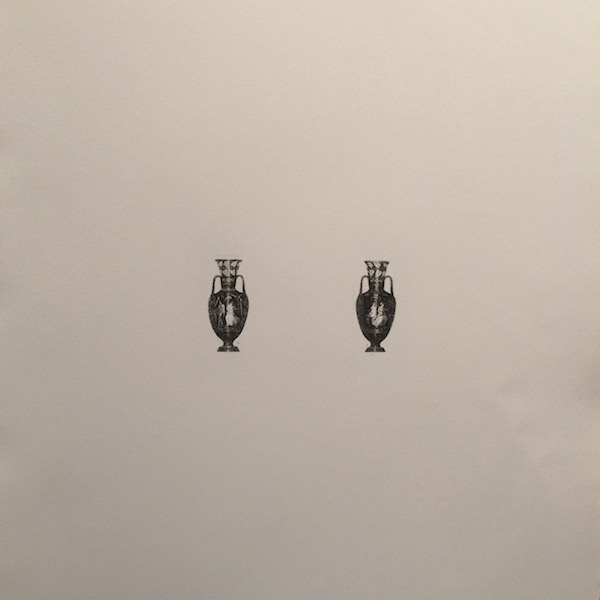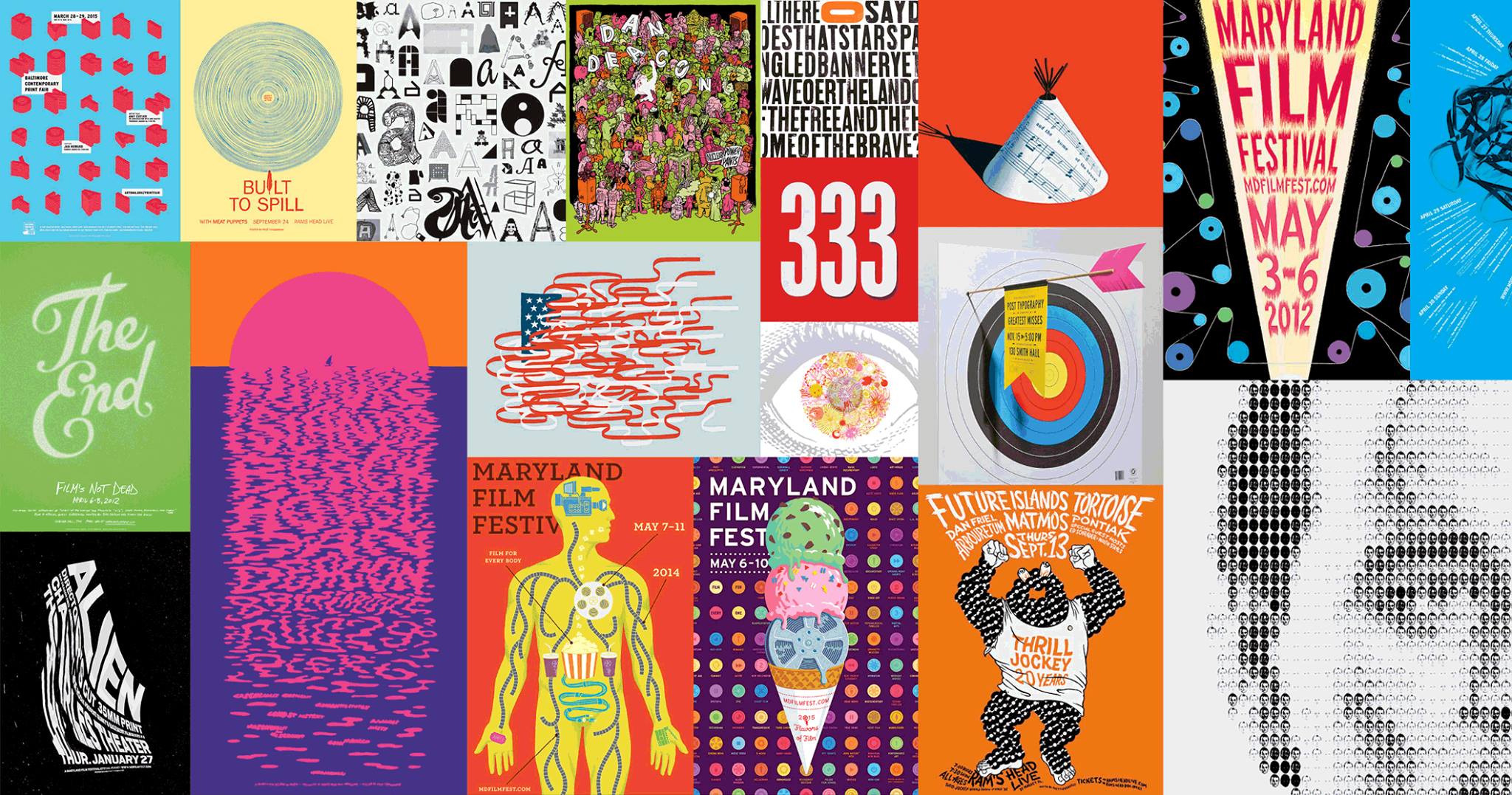topo(log) typo(log) @ ICA at the George Peabody Library
By Terence Hannum
In Jorge Louis Borges’ short story The Book of Sand, a retired librarian gives up his whole life when he discovers an infinite book. Slowly, the protagonist realizes the expanding book is consuming him and the whole world. Upon this comprehension he hides the book in the basement of the National Library, stating that, “the best place to hide a leaf is in a forest.”
Lu Zhang’s new exhibition topo(log) typo(log) at the George Peabody Library focuses on the forest itself–the library. After a yearlong residency, where Zhang kept a studio on the premises, this exhibit is an unusual partnership between the Institute of Contemporary Art Baltimore, librarian Paul Espinosa, and the artist herself. Displayed simply as artist books on wooden tables in the center of one of Baltimore’s most dramatic buildings, Zhang has attempted to translate and synthesize the collection through her (decidedly un-Dewey Decimal) perspective as an artist. The yearlong residency culminated in six artist books dedicated to her experience of the archive, and each employ a distinctive approach, medium, and concept.
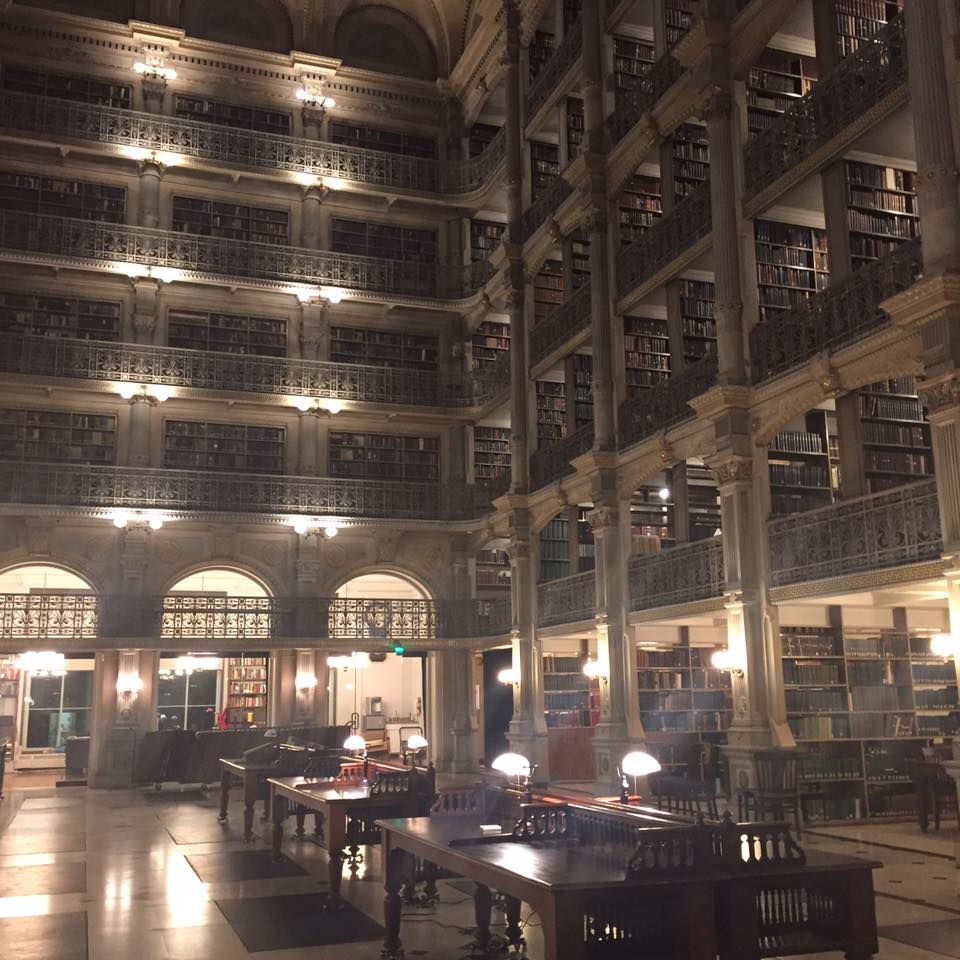
topo(log) typo(log)’s six separate volumes vary from traditional artist and photo books to unusual collections of impressions and detritus to interventions, which initiate new collections. In many ways Zhang has created a meta archive: a collection of archives that can be randomly accessed by looking and turning the pages. If you are, like me, someone who enjoys wandering the stacks in a library and finding something without any guidance, you will appreciate the artist’s arbitrary yet specific approach where formal, visual qualities are given equal weight to textual or historical content.
Each of these books is presented on a table in the library, the very library that will absorb these musings on the archive into the archive. It is an organized vacillation between the archive itself, the Peabody Library, and the impossible task of archiving.
Each book, no matter how delicate, can be opened without gloves making the editions tangible. They are experienced physically, not elevated to some status of untouchable art object. They maintain their use as books and are decidedly not precious, inviting participation.

Part I
A book of Xerox prints excised from Encyclopedic catalogs in the collection of the library including renderings by E. G. Lind (architect of the building), maps of Baltimore, and other technical renderings suspended in the center of each page, with dramatic amounts of white negative space surrounding them. With this book the artist is closest to expressing what this exhibition is about: the library itself as a physical space as well as the its conceptual intent as a locus of organizing information.
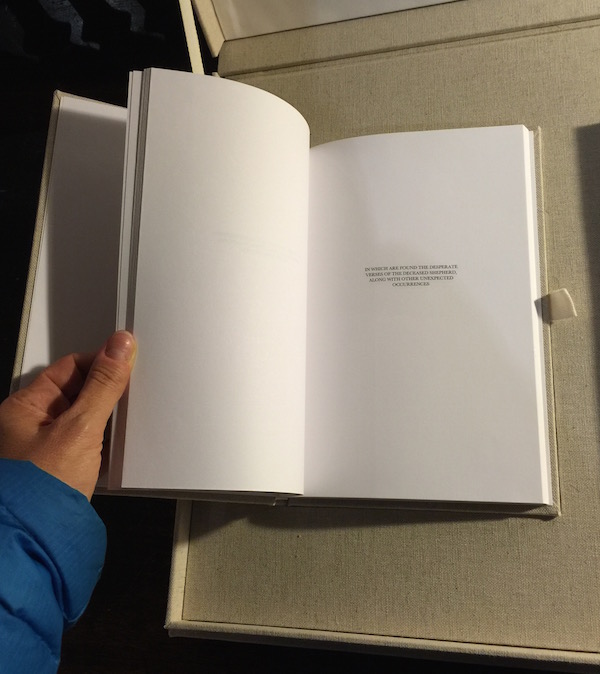
Part II
Part one of the two volumes presents a list of the sequence of names of each adventure from Miguel de Cervantes’ Don Quixote de la Mancha. This reference is pertinent if you recall that Cervantes’ novel depicts the destruction of a library as well as other meta-fictional tricks in the novel’s origin. The second book compiles cards from the Peabody’s card catalog featuring biographical titles that read as a torrent of individual lives.

Part III
Marble, wood, linoleum: this accordion book uses scans of surfaces found around the library’s interior that unfolds into a horizontal story. Occupying the bottom 1/8 of each page is a small transcription of curator Paul Espinosa’s tour of the library, including questions from those being given the tour. Slipping between information, casual comedy and arresting visuals that remind me of the texture studies in Gordon Matta-Clark’s artist book Walls Paper, this piece is like scanning a landscape in its details, finding composition through lines and a reverent approach to the details of the physical space, including visual, audio, and sensory cues.
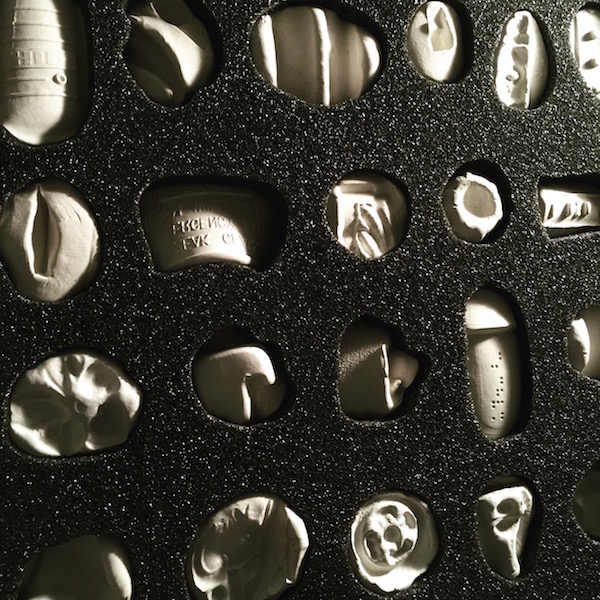
Part IV
A collection of 31 impressions of the library rendered in polymer clay displays an alphabet of imprints. Book four enters into the realm of sculpture with the miniature impressions housed neatly in a foam container that can be handled. Most of these white objects could fit in your hand but carry the weight of a totem that transcends its origin.
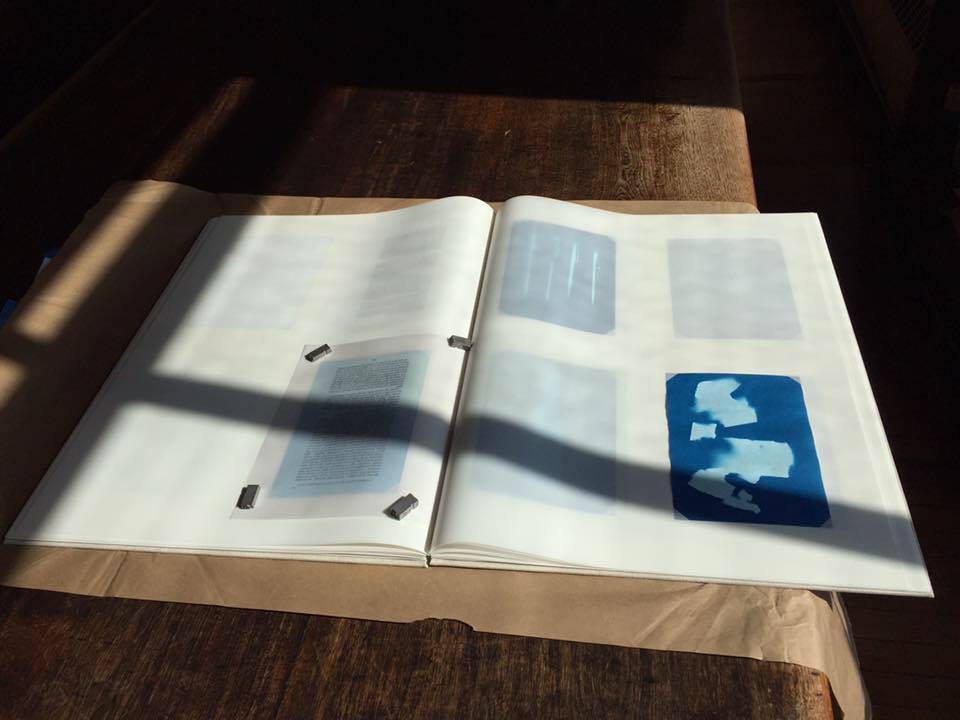
Part V
Taking the contents of amateur meteorologist Luke Howard’s 19th century book “Modification of Clouds,” Zhang takes Howard’s text and prints it on vellum. Then she combines these pages with his original cyanotypes and with new cyanotypes generated by the artist. Using objects from the offices and stacks of the Peabody on photo-sensitive paper, Zhang used light from the windows of the library to make these prints. This book also refers back to the infinite possibilities of the archive’s endless forms, like a cloud.
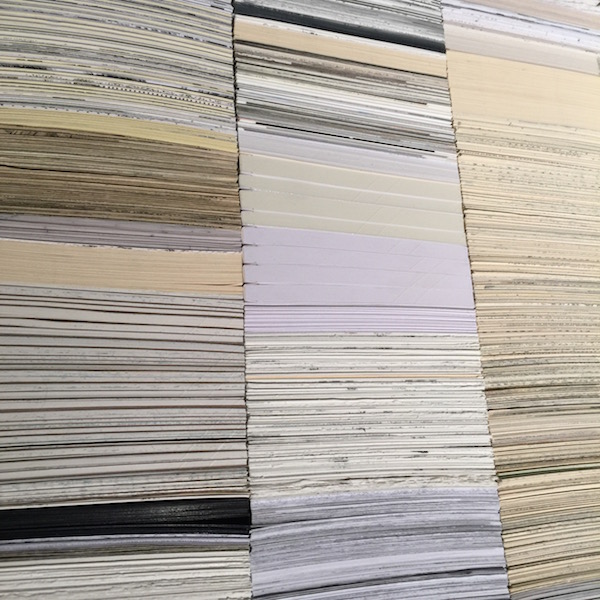
Part VI
The final book is a card catalog-like collection of the detritus at the end of the process. It consists of all Zhang’s leftover material cut down to tight rectangles. Similar to a Fluxus miniature of the library itself, to see the contents you have to select a section and sift through separated sheets of vellum, paper, booklets, and transparencies.
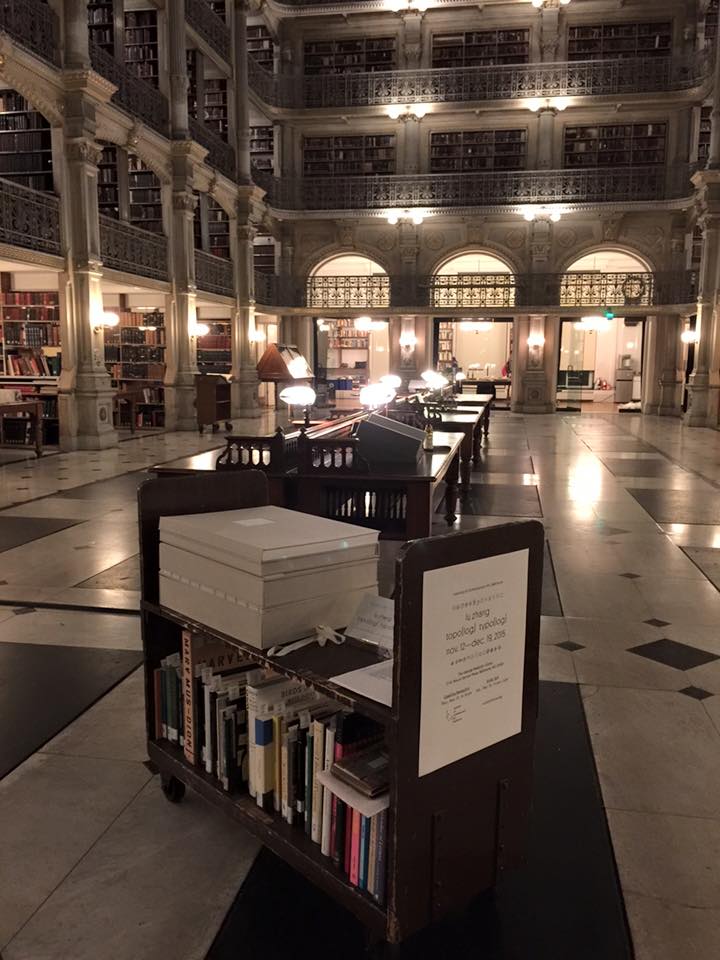
Conclusions:
Does a library have an end? Or if it burned, the way the librarian in Borges’ short story considers it, would it burn forever and take the whole world with it?
I’ve long been interested in how we organize information, both collectively and individually, in our memories and in our archives. Whether formally or informally collected, our systems for storing memories, information, and knowledge will always be flawed. It is an impossible, yet worthwhile, task.
Aby Warburg is known for an esoteric archive, whose final and unfinished project The Mnemosyne Atlas organized mostly visual information around diverse and arcane themes. It is the unfinished quality that truly expresses the task at hand–and that is the essence of the archive. Lu Zhang’s love of the book and library is inspired by the impossibility of an adequate impression and this larger task acts as a mirror for the wormhole of human memory.
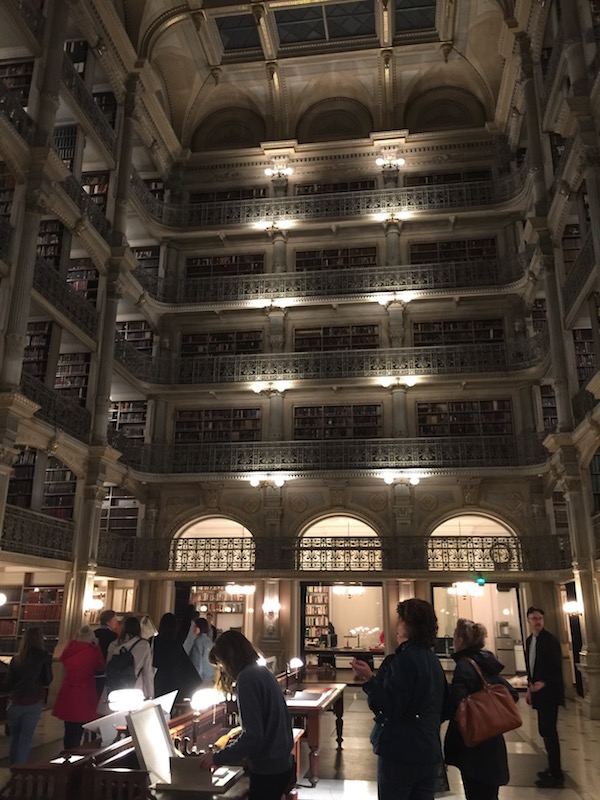
That Zhang’s exhibition not only occupies space in a historically important library but will also itself become a part of the library is significant. In many ways, topo(log) typo(log) has humanized and personalized the George Peabody Library, invited new visitors in and allowed us to access its depth and breadth by simply turning Zhang’s pages, seeing it all from her perspective. This exhibit embodies how expandable an archive can be when it is doubled back on itself, how reflexive and responsive to the individual experiencing it.
I am curious about the impact of these well crafted and conceived books once the exhibit is over and they are simply folded into the vast stacks at the Peabody, although there is also something appropriately poetic about them assimilating and disappearing into the place that spawned them. Like the library itself, knowledge is incomprehensible and mysterious, yet full of intricate details and tangents.
Lu Zhang’s topo(log) typo(log) is a physical, visual manifestation of the romantic impossibility of the archive. Just when you think you have it, that you know the limits of a subject, another tome is added or sheet removed, or mutated, and that omniscience, inevitably, is unattainable.
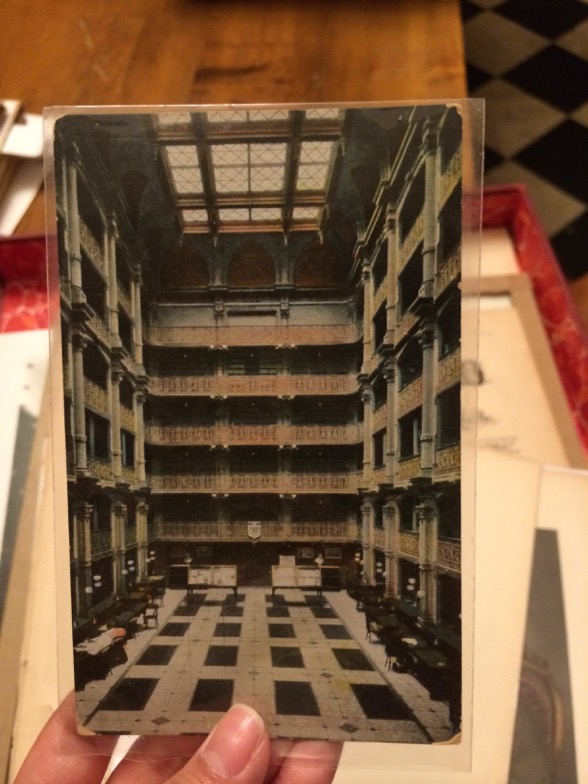
Author Terence Hannum is a Baltimore based visual artist and musician who performs solo, with the avant-metal band Locrian (Relapse Records) and the dark synthpop duo The Holy Circle. Hannum is an Assitant Professor of Art at Stevenson University. He has had solo exhibitions at Guest Spot (Baltimore), Western Exhibitions (Chicago, IL), Stevenson University, Museum of Contemporary Art, Chicago, Gallery 400 at UIC (Chicago, IL). And in group shows at TSA (Brooklyn, NY), sophiajacob (Baltimore, MD), Allegra La Viola (NYC), City Ice Arts (Kansas City, MO) & Jonathan Ferrara Gallery (New Orleans, LA).
Disclaimer: Lu Zhang is pictured within and on the cover of the new BmoreArt Journal of Art + Ideas. This review is completely separate from the print journal and it’s author wrote it exclusively for BmoreArt.com.
topo(log) typo(log): Lu Zhang, Institute of Contemporary Art Baltimore
The George Peabody Library
17 W. Mount Vernon Place
Baltimore, MD 21202
Exhibition Runs: Nov 12 to Dec 19 2015
Open Hours: Tuesday + Wednesday 9 AM to 5 PM
Thursday 9 AM to 7 PM
Friday 9 AM to 2 PM
Saturday 10 AM to 2 PM
Tours available by appointment.
Library closed on Sunday and Monday.
Artist Talk: Saturday Dec 12, 11 AM – 1 PM
